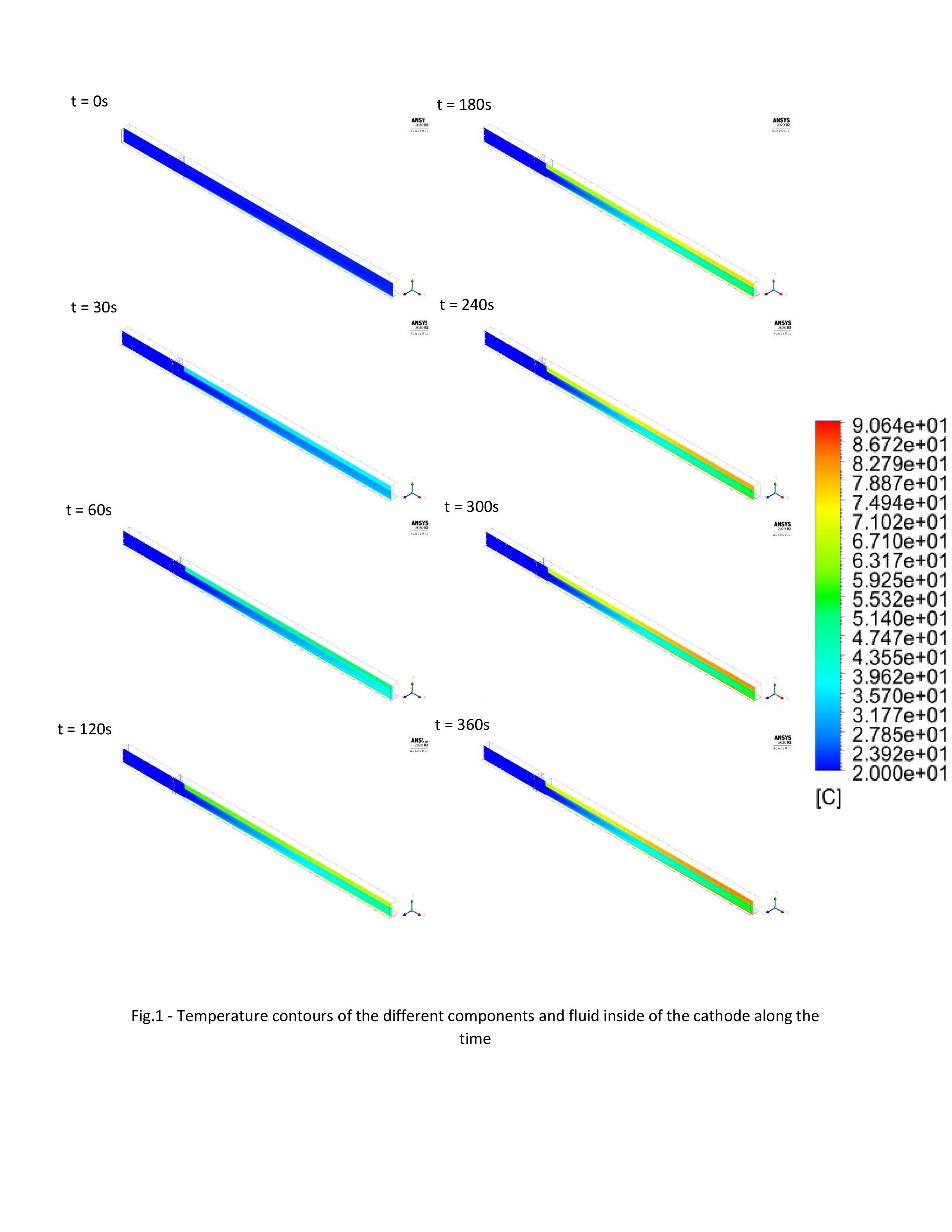Abstract
Within telecom applications, the air-cooled fuel cell, as a backup power system, has recently been gaining popularity. These fuel cells are cost effective, simple, and additionally they do not require a secondary coolant loop. However, since airflow is used as coolant, the heat generated by the fuel cell limits the current density and thus the power density. A turbulence inducing grid is placed in front of the cathode channel to make the airflow turbulent and hence increase the convective cooling effect from the air. The turbulence inducing grid is placed 2.5mm from the cathode channel since previous studies have shown this distance to be most effective.
In this study, a three dimensional CFD analysis on the effect of a transient boundary conditions on the cooling effect of the turbulence grid has been conducted. Special emphasis has been on using the comprehensive Reynolds Stress Model as turbulence model. Additional analysis has been made on the cooling effect of pulsating flow with a period of 10 seconds excluding the turbulence inducing grid. At an electrode heat flux of 2600 W/m2, the results indicate that the convective cooling effect increases when using transient boundary conditions compared to steady state boundary conditions. Furthermore, results show that the start-up time is seven minutes, and the time-averaged peak temperature in the transient case is two degrees Celsius below the peak temperature of the steady state case. The CFD analysis show an additional cooling effect due to accelerated-decelerated flow conditions.

Figure 1

